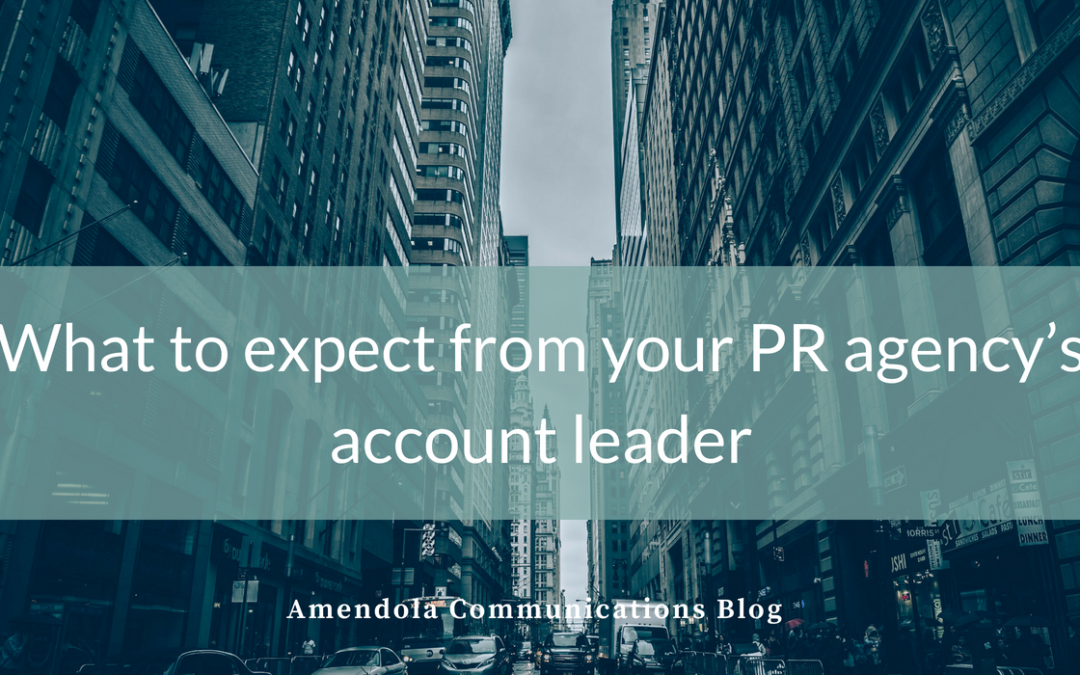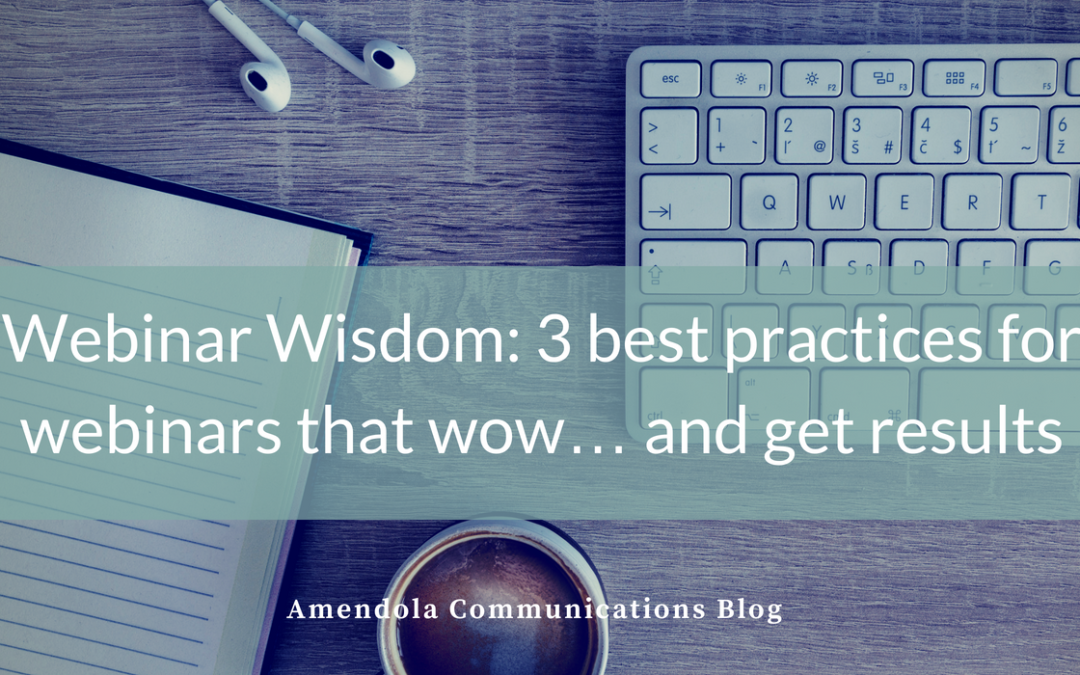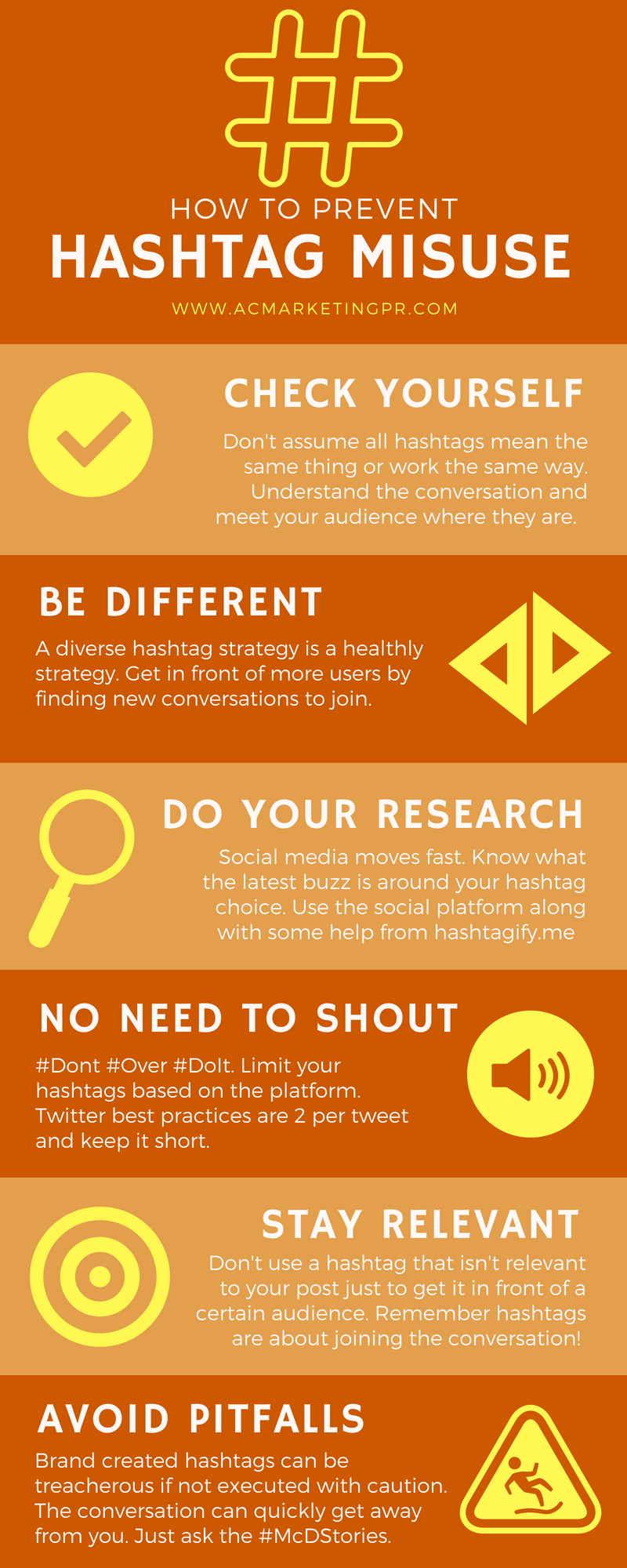
by Philip Anast | Aug 22, 2018 | Blog
As a communications executive working with a PR agency, you might assume that your account team members, and especially your main point of contact, practice what they preach. After all, you hired them to communicate your value to target markets.
Yet, it doesn’t hurt to take stock of your agency’s communications prowess. It can be the difference between a trusted partnership and a stressful relationship.
Sound client communication is the forerunner to delivering value and results on a consistent basis. It facilitates your productivity by making the most of your precious time.
Your account lead is the quarterback that sets the tone for your entire agency relationship.
Here are some best practices and questions to consider:
General communication
- At the outset of a relationship, explain your preferred methods of communication and set an expectation of frequency
- Expect that even in a long-distance relationship, your agency, and especially your account executive, is committed to periodic face-to-face strategy and planning meetings
- Insist that your account lead make the most of each encounter with you
- Does s/he empower you to take action or make a decision rather than suspend progress until you return a phone call?
- For e-mail communication, is s/he concise yet thorough with a request?
Account progress
- Do you consistently get a sense of progress, alignment with program objectives and results?
- Does your account lead explain how objectives are being addressed?
- Does s/he use consistent language when discussing projects?
Merchandising results
- Insist that your account lead explain how a placement accomplishes specific program objectives
- S/he also should explain how results validate the direction of a program or indicate program adjustments
- Does s/he detail how coverage can be used in sales and marketing activities, e.g. how a piece can be socialized through Click to Tweet and other social tools?
- Does s/he offer to assist in tactical execution?
Holding your agency lead accountable to these and other best practices can help your agency relationship flourish and deliver tangible results for your organization.

by Brandon Glenn | Aug 8, 2018 | Blog
In most cities, a sports star leaving to join another team wouldn’t quite reach the level of crisis. No doubt, the world has countless far more serious and urgent problems.
But Cleveland’s a little different than most cities. Egos are a bit more fragile here after decades of job loss, population decline, environmental damage, and not to mention sports ineptitude or so it seems to this (humble) outsider who first moved to Cleveland about a decade ago.
So after the Cleveland Cavaliers drubbing yet again at the hands of the Golden State Warriors in the NBA Finals in June, coupled with LeBron James impending free agency, thing were looking pretty bad for Cleveland. Despite hailing from nearby Akron and enjoying close ties with the local community, LeBron looked likely to depart Cleveland for a sexier, more glamourous destination, leaving the locals he left in his wake feeling abandoned and forgotten.
Unfortunately, that’s exactly what happened. But to LeBron’s credit, he learned from a past mistake, and let Cleveland fans down a little easier this time, while simultaneously providing a lesson on crisis communications.
We’ve seen this movie before
The date of “The Decision” by James – July 8, 2010 is one that lives in Cleveland sports infamy. On that night, the then-25-year-old who is perhaps the greatest sports star the city has ever known crushed his hometown fans by announcing on live TV his intention to “take my talents to South Beach and join the Miami Heat.” Next came the reaction. A city mourned, jerseys were burned, insults were hurled, and one melodramatic fan called it “the worst day of my life.”
Later that night, Cavaliers Owner Dan Gilbert hastily published a scathing open letter notoriously printed in comic sans font excoriating James for a “several-day, narcissistic, self-promotional build-up culminating with a national TV special.” Illustrating that Gilbert’s PR team had ready access to a thesaurus, the irate owner peppered his letter with several enjoyable descriptions of James and his decision, including “cowardly betrayal,” “shameful display of selfishness,” “shocking act of disloyalty,” and “heartless and callous action.”
To be clear, the majority of Cleveland fans weren’t angry at James for signing with Miami; they were upset by the “needless pain” he inflicted on the city for the spectacle of “The Decision,” which I recall one commentator comparing to a newly minted millionaire going on national tv to tell his high-school sweetheart he’s dumping her to move in with a supermodel.
Indeed, players change teams all the time (LeBron has now done it three times) “but no player has ever done it with the pomp, phoniness, pseudo-humility, and rehearsed innocence” as James, as a Chicago Sun-Times columnist correctly observed. That’s what understandably perturbed Cleveland fans, and later provided James with an opportunity to show growth in his style of public communication.
A second chance
After James spent four seasons in Miami and won two championships while making the NBA Finals every year, in 2014 he did what was once unthinkable. He mended fences (kind of) with Gilbert, rejoined the Cavs and led the city to its first major professional sports championship since 1964.
Then James broke Cleveland’s heart all over again. On July 1, 2018, the now-33-year-old James announced he was leaving the Cavaliers once more, having signed with the Los Angeles Lakers.
But this time it was different no self-serving, nationally televised special; no week-long buildup of drama and, thankfully, no jersey burnings or lamentations about the worst day of fans lives. James and his advisors simply delivered the news in 36-word press release:
LeBron James, four time NBA MVP, three time NBA finals MVP, fourteen time NBA All Star, and two time Olympic gold medalist has agreed to a four year, $154 million contract with the Los Angeles Lakers.
While unnecessarily trumpeting his major accomplishments on the court isn’t the height of modesty, James deserves credit for learning from his mistakes and rolling out his latest “decision” in a far more muted, low-key fashion.
And that brings us to what we can learn from James in crisis communications: Be brief, take responsibility, get to the point and don’t sugarcoat things.
While this is a lesson that apparently took James eight years to learn, healthcare organizations can learn from his mistakes by never committing them in the first place.
And it’s probably best to avoid ever proclaiming that you’re taking your talents anywhere.

by Lisa Chernikoff | Aug 1, 2018 | Blog
I have a confession. I’m not ashamed. It’s my truth. I love a webinar. I love everything about it. I love writing the title and description. I love promoting it and watching the registration count rise each day. I love when the day finally arrives and the presentation comes to life.
I even love the items on the post-webinar to-do list like sending the follow-up emails to keep the audience engaged, warming up the leads for the sales team or converting them into new sales opportunities. Yes, that’s really why I love webinars. I love the results and by that, I mean the results when everything is done right.
However, I’ve found that many marketing and PR professionals don’t share my pro-webinar passion. In fact, much to my horror and astonishment, many of them are firmly planted in the anti-webinar camp. But I understand their point of view. Most likely, they have been discouraged by a webinar that fell flat, or they simply don’t understand how to harness the true power of a webinar.
As a lover of webinars, with a successful track record over the last decade, I’m here to help with some tried-and-true best practices.
Create customer-focused content
There is almost no better forum than a webinar to highlight your customer’s successes. Why? It’s much different to just read a case study than to have your customers verbally share their stories. On a webinar, attendees can experience that case study live, identify with the challenges and celebrate in the successes which could soon become their own successes with the help of your company.
Now, having a customer co-presenter is the best-case scenario. We know that complete, fully baked customer case studies can be hard to come by or even nearly impossible when companies are launching new products. But there is incredible power in a customer case study that’s still in progress as well. Whether the journey has just begun or the results are preliminary, it’s still better for attendees to hear from their peer rather than just your team.
Webinars with customer co-presenters are almost always more well-attended and more successful. Plus, with customer co-presenters, your company also benefits from being associated with your customer names and brands. Even if someone doesn’t attend your webinar, they may remember that you work with that top hospital.
Prepare for an interactive experience
Even though a webinar is somewhat similar to any other speaking engagement, it’s technically much different. It’s challenging to speak into the phone rather than speak into a crowd of faces that may be either nodding their heads in agreement or nodding off out of boredom. That’s why it’s so important to leverage the technology to create an interactive experience that benefits both your attendees and your speakers.
Even the most basic webinar platforms offer a polling feature which should be used 2-4 times throughout the webinar. We often recommend to clients that they start with a poll question to get a better understanding of what the attendees are looking to learn or why they chose to attend. It can also be helpful for the initial poll question to serve as a gauge for understanding the “level” of attendees. For example, how would they rate their organization’s progress on the journey to value?
Also, did you know that one of the easiest, most painless ways to drive future registrations is right at your fingertips during each webinar? At the end of your presentation, while you still have a captive and hopefully happy audience, simply invite attendees to the next relevant session in your webinar series. When sessions are monthly or quarterly, attendees who enjoyed your webinar usually will vote “yes” via a poll to be automatically registered for the next session.
Focus on follow-up, not just promotion
Lastly, it’s incredibly common for even some of the savviest marketers to focus almost entirely on webinar promotion rather than placing equal importance on the webinar follow-up communications. Don’t neglect the attendees who just spent 30-minutes or an hour with you! They are now primed and ready for more so it’s mission critical to send timely (ideally within 24 hours or less but 48 hours max) follow-up emails to attendees and those who registered but didn’t attend.
It’s also important to send them more than just the webinar recording or the slides. Perhaps you can offer them a new eBook about best practices featured on the webinar or you may have a written case study to share on the same topic. It’s not always about having new content to share. It’s about having relevant content to share and becoming a go-to expert.
Regardless, it’s important for your follow-up communication to be educational and informative to drive continued engagement. After all, once someone spends an hour with you via a webinar, they are more invested. Now it’s about keeping them invested in your content, your customers and most importantly, your company.

by Ken Krause | Jul 25, 2018 | Blog
For many writers, including (especially?) this one, analogies are one of the most important and commonly used tools in our toolbox. Relating a new or complex topic, such as just about anything in health IT (HIT), to a familiar example readers already know and understand seems like a good way to shorten the learning curve and ultimately move the sales needle.
Of course, not everyone buys into that idea. “Our target audience is made up of serious and highly educated people,” some say. “They don’t need some silly reference to cars, or movies, or building a house to understand our products/services. They just want the facts.”
That’s why I was so excited to discover the work of Robert A. Bjork, Ph.D., a Distinguished Research Professor at UCLA who specializes in cognitive psychology. Dr. Bjork’s research on how we learn shows “If information is studied so that it can be interpreted in relation to other things in memory, learning is much more powerful.” In other words, if you want someone to understand a new concept, it helps if they can relate it to what they already know and understand.
So it turns out there’s actually some science to the use of analogies. Giving information context, or “seating” it within what someone already knows (to use Dr. Bjork’s term) helps readers comprehend the information faster.
That’s where analogies can bring a lot of value. You start with something simple and familiar to get them thinking in the right direction. You then show how the new, complex concept fits within that familiar landscape.
Because you have already set the context, you’re far more likely to get the target audience to start nodding their heads in agreement. As any good salesperson can tell you, gaining that agreement is an important key to closing the sale.
Going deeper
Using analogies also helps ease readers into deeper conversation. It’s like opening a serious lecture with a joke, or sprucing up the front of your house when you’re trying to sell it to make it more inviting to prospective buyers. (See what I did there?)
First you capture their interest, then you get into the meat of what you want to say. That works a lot better than just launching right into the detailed information.
Another reason analogies help is they can take what might otherwise be a dry, technical topic and spice it up like adding a good rub to a steak before grilling it. (I’m on a roll now!) The steak is still the star, but the rub helps bring out all the flavor the steak has to offer.
Editor reaction
One more good reason to use analogies is in my experience, most editors like them. Especially editors of publications that cover technology products for business or even technical audiences.
They get tons of contributed articles that sound like they were written by engineers for engineers. The articles convey facts, but they don’t “grab” readers and compel them to pick up the publication.
A good analogy can help spur reader interest, which is the editor’s main goal. Throughout my career I’ve received many nice notes from editors, including some from very technical publications, thanking our clients for taking such an interesting perspective and writing an article people might actually want to read.
Now, that doesn’t mean you should always try to work an analogy into every byline, blog post, or other content. Even I don’t do that. Sometimes playing it straight is the right approach to take, whether that’s dictated by the publication or the subject matter.
But where you can, and where it works, using analogies is a great way to draw your audience in and help them quickly understand the key point you’re trying to convey.

by Heather Caouette | Jul 18, 2018 | Blog
Have you ever heard the phrase, “it’s not what you say but how you say it?” This “how,” or nonverbal communication, accounts for more than 90 percent of what we convey. In fact, former UCLA Professor Albert Mehrabian found that the use of one’s voice makes up 38 percent of what we communicate and body language comprises up to 55 percent. By not paying attention to cues, you could be mixing messages or sending unspoken messages in ways that go beyond the Oxford comma debate.
Depending on how the words are delivered, carefully crafted messages can be disregarded, along with an expert’s credibility. This spokesperson could instead appear disinterested or worse. Is that person carefully pondering the question or thinking of what is for dinner? That answer lies in the interpretation.
Conference calls
A major part of work days, including a high percentage of media interviews, are spent on the phone. Many of us jump from one conference call to another without a second thought. However, just because someone can’t see you, does not mean your actions are unnoticed. Here are some pointers for navigating these interactions:
- Know your key messages: Don’t memorize them; rather, internalize the main three points you want to leave behind. That way, they will naturally integrate into the conversation.
- Smile: This truly does change how your voice projects and can be heard on the other end.
- Speak calmly and confidently: Voice tone can portray openness, knowledge and legitimacy of the person talking. Using frequent “ums” or sounding overly emotional can have the opposite effect.
- Mute the sound track: Background noise can distract both ends of the conversation and take away from the main points. This may also come across as though the call was not a high enough priority to find a quiet location.
In-person Meetings
Whether you are embarking on a media tour, going for coffee or taking meetings at tradeshows, these in-person encounters are a great way to make a lasting impression make sure it is a positive one. Your audience, including reporters and business prospects, can now see you in addition to hearing you, so there are more messages being conveyed in meetings that typically run longer than telephone interviews. Make sure they are all working in your favor.
- Speak with your body language: No, this does not mean the cha-cha, floss or any other dance du jour. This refers to how you carry yourself, so you appear approachable but not sloppy; confident without coming across as arrogant. It is the details, including making eye contact and leaning forward a bit to the person you are speaking with to show you are engrossed with the conversation.
- Appear engaged: Smile periodically and occasionally nod your head in agreement with the person you are meeting. Beware of crossing your arms you may be cold, but it will come across as disinterested.
- Respect personal space: Provide enough distance to keep the other person comfortable but not so far away that you lose the connection.
- Remove distractions: Show the reporter, analyst or prospect that they are important enough to have your undivided attention. Turn the cell phone off, or keep it on vibrate, and put it away. The temptation to check messages is strong, so remove it from the equation.
Many of the points discussed above are subjective. More than anything else, read how your nonverbal communication is being received, so you can adjust as needed. Great spokespeople leave an impression because they know how to present themselves and understand how they are being received. Listening to the unspoken messages of others will help you become a master communicator.
by Jenna Warner | Jul 11, 2018 | Blog
Do your research. Or end up with #EGG on your face.
hash·tag: A word or phrase preceded by a hash mark (#), used within a message to identify a keyword or topic of interest and facilitate a search for it.
Communication has and will continue to evolve. It is a powerful tool when used correctly, and social media has taken communication to new heights. Now, we can reach beyond our own networks to communicate, discover and assemble instantly. However, a tool is only as powerful as its operator.
Though each social network has its own way of displaying posts under a certain hashtag, and their own algorithms for specifying trending content, these rules tend to hold true in general across each social channel. Follow them and you too can prevent hashtag misuse.






